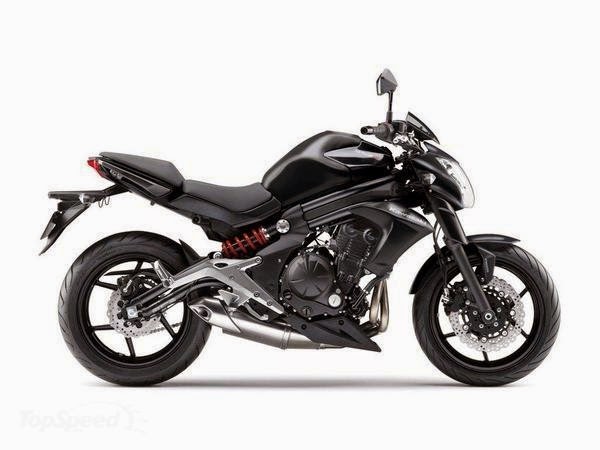SPECIFICATIONS:
year: 2013
make: Kawasaki
Model: ER-6N
Engine: Liquid-cooled, 4-stroke Parallel Twin
Transmission: 6-speed
Energy: Fuel injection
Displacement: 649 cc
There aren’t many motorcycles that can go head to head with success with the Kawasaki ER-6nL. This muscular mechanical beast is wrapped in an aggressive street-fighter skin which underlines its unstoppable character.
It is worthy of being mentioned that the 2013 version comes with a slimmer new chassis and a fresh seat design that gives you a more comfortable ride.
Talking about comfort, the motorcycle’s riding position was carefully adjusted to inspire confidence. Therefore, the handlebars, seat and footpegs are working together to give you a natural position that feels similarly comfortable for both short and long journeys.
Once on board you are also met by a stacked instrument cluster with analogue-style tachometer and multi-function dual-window LCD screen. In addition to the fuel gauge, digital speedometer, clock, odometer and dual trip meters, new 2013 features include: remaining range, average/instant fuel consumption and the Economical Riding Indicator.
Overview
This is the latest evolution of the model that introduced the “Fun. Style. Easy.” concept to the world. Increased engine performance makes the new 2013 ER-6nL ABS even more fun. Aggressive street-fighter looks make it even more stylish. And a slimmer new chassis and comfortable new seat make it even easier to ride than before.
Whether a new rider getting acquainted with the joy of motorcycling for the first time, or an experienced rider looking for a fun, stress-free way to get around, the package offered by the ER-6nL has never been more tempting.
The 2013 Kawasaki ER-6nL’s Parallel Twin engine configuration was chosen as the best balance of good power characteristics and compact size. Engine tuning delivered both a rider-friendly character ideal for new riders and performance to put a smile on the faces of more experienced riders. The engine’s compact size was one of the keys to realising the ER-6nL’s slim package. The 2013 engine offers more low-mid range torque for more fun and greater usability in everyday riding situations, while maintaining the smooth, high-revving character of its predecessor.
2013 Kawasaki ER-6nL ABS Features
Improved Engine Performance
Liquid-cooled, DOHC, 8-valve 649 cm3 Parallel Twin with fuel injection delivers smooth, responsive performance, especially in the low and medium rpm ranges. The engine was tuned for rider-friendly power characteristics that will inspire confidence in new riders.
Digital Fuel Injection
The DFI settings boost the engine’s bottom-end power while letting it rev more quickly. The sub-throttle valve equipped 38mm Keihin throttle bodies offer optimum performance and rideability. Located behind the main throttle valves, the sub-throttles are controlled by the DFI system’s ECU for a precise throttle response, similar to a constant velocity carburettor.
Under-engine muffler
Under-engine muffler with larger volume and revised internal construction delivers increased torque in the everyday range below 7,000 rpm. The increased performance facilitates control at lower rpm and contributes to the enhanced enjoyment of the new ER-6n.
Slimmer Lighter-handling Chasis
The ER-6nL’s compact size is due largely to its compact Parallel Twin engine, which enabled the use of a narrow, lightweight frame.
While the new double-pipe perimeter-style frame, clearly visible, maintains the key design elements of its predecessor, a new backbone-style rear frame design enables an even slimmer package.


